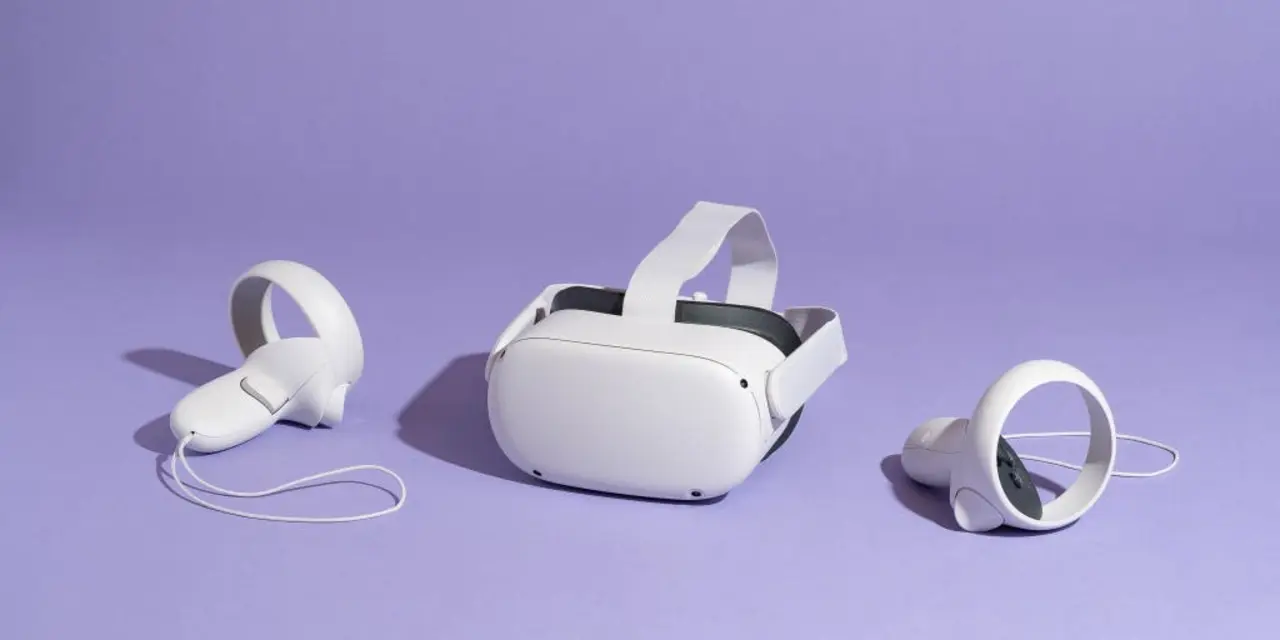Is mobile virtual reality the same as virtual reality?

Exploring the Differences Between Mobile Virtual Reality and Traditional Virtual Reality
Virtual reality (VR) is a simulated experience that can be used in a wide range of applications, from gaming to entertainment, education, and more. Mobile virtual reality (MVR) is a form of virtual reality that utilizes a smartphone and specialized headset to create a virtual environment. But what is the difference between mobile virtual reality and traditional virtual reality?
Hardware Requirements
One of the primary differences between MVR and traditional virtual reality is the hardware requirements. Traditional virtual reality utilizes powerful computers with specialized graphic cards, as well as a headset and sensors to create a fully immersive experience. In contrast, MVR only requires a smartphone to create a virtual environment. Smartphones are typically more accessible and affordable than computers and headsets.
Cost
The cost of traditional virtual reality can be quite high, as it requires expensive hardware, such as powerful computers and specialized headsets. In comparison, MVR is much more affordable, as the only hardware requirements are a smartphone and a specialized headset. This makes MVR a more accessible and affordable option for those who may not have the budget to invest in traditional virtual reality.
Experience
Another difference between MVR and traditional virtual reality is the experience. Traditional virtual reality is able to create a much more immersive experience than MVR, as it utilizes powerful computers and specialized headsets to create a fully 3D environment. MVR, on the other hand, is limited by the capabilities of the smartphone, and is therefore not able to create as realistic of an environment. Although MVR is still able to create a virtual environment, it cannot match the level of realism of traditional virtual reality.
Applications
Due to the differences in hardware requirements, cost, and experience, MVR and traditional virtual reality have different applications. Traditional virtual reality is used in a wide range of applications, from gaming to entertainment, education, and more. MVR, however, is typically limited to gaming and entertainment applications. This is due to its lower cost and less immersive experience. As a result, MVR is not suitable for applications that require a high level of realism, such as medical training or engineering simulations.
Conclusion
In conclusion, there are a number of differences between mobile virtual reality and traditional virtual reality. Traditional virtual reality requires powerful hardware, is more expensive, and can create a much more immersive experience than MVR. In comparison, MVR is more affordable, requires only a smartphone and headset, and is limited by the capabilities of the smartphone. As a result, MVR is typically limited to gaming and entertainment applications, while traditional virtual reality is used in a wide range of applications.
Examining the Pros and Cons of Mobile Virtual Reality vs. Traditional Virtual Reality
Pros of Mobile Virtual Reality
One of the main advantages of mobile virtual reality is that it is much more accessible than traditional virtual reality. Mobile virtual reality is available on a wide range of devices, from smartphones to tablets and laptops, making it much easier for people to access. Additionally, mobile virtual reality does not require the same expensive hardware that traditional virtual reality does, which makes it more affordable for users. Mobile virtual reality also provides a more immersive experience than traditional virtual reality, as users are able to move around and interact with the virtual world in a more natural way. Finally, mobile virtual reality is more portable, allowing users to take their virtual reality experience with them wherever they go.
Cons of Mobile Virtual Reality
One of the main drawbacks of mobile virtual reality is that the quality of the experience is not as good as traditional virtual reality. Mobile virtual reality is limited by the hardware of the device it is running on, which can limit the functionality of the experience. Additionally, the motion tracking capabilities of mobile virtual reality are not as accurate as traditional virtual reality, which can lead to a less immersive experience. Finally, some mobile virtual reality experiences may require the user to be connected to the internet in order to access certain features, which can be inconvenient for users.
Pros of Traditional Virtual Reality
One of the main advantages of traditional virtual reality is that it provides a much higher quality of experience than mobile virtual reality. Traditional virtual reality requires expensive hardware and software, which allows it to provide a more immersive experience than mobile virtual reality. Additionally, traditional virtual reality has much better motion tracking capabilities, providing a more accurate representation of the user's movements. Finally, traditional virtual reality does not require an internet connection, allowing users to access their virtual reality experience without being connected to the internet.
Cons of Traditional Virtual Reality
One of the main drawbacks of traditional virtual reality is that it is not as accessible as mobile virtual reality. Traditional virtual reality requires expensive hardware and software, which makes it more expensive and less accessible to the average user. Additionally, traditional virtual reality can be bulky and difficult to transport, which makes it less portable than mobile virtual reality. Finally, traditional virtual reality is often more complicated to use, requiring users to learn how to use it properly in order to get the most out of their experience.
Comparing the Applications of Mobile Virtual Reality and Traditional Virtual Reality
Virtual reality (VR) is a technology that immerses users in an artificial environment. By using sensory devices and a headset, users can interact with their environment as if they were actually there. Mobile virtual reality (MVR) is a subset of VR that relies on the use of mobile devices, such as smartphones or tablets, to create the experience. Both types of virtual reality offer immersive experiences, but there are some key differences that set them apart.
Mobile Virtual Reality
MVR is relatively new, and it has the potential to revolutionize the way we experience virtual reality. By taking advantage of the portability of mobile devices, MVR makes it possible to take virtual reality with you wherever you go. The experience is usually created by placing the device in a headset, such as the popular Samsung Gear VR, which has become a popular platform for MVR experiences. This type of virtual reality is accessible to anyone with a compatible device and a headset, making it a great option for those who don’t have access to traditional VR.
Traditional Virtual Reality
Traditional VR requires a much more sophisticated setup than MVR. It usually involves wearing a headset and using hand controllers to interact with the virtual environment. This type of virtual reality is more immersive and allows for more complex interactions than MVR. It also requires specialized hardware, such as a powerful gaming computer and a high-end headset, which can be expensive and out of reach for many users.
Applications of Mobile Virtual Reality
MVR is still relatively new, so its applications are still being explored. It is particularly well suited for gaming, as it allows users to experience games in a more immersive way. It can also be used for education, allowing students to explore virtual environments and interact with them in a more tangible way. MVR is also being used for virtual tours, allowing people to explore places they may not be able to visit in person.
Applications of Traditional Virtual Reality
Traditional VR has been around for longer and is used for a wider variety of applications. It is used for gaming, but it is also being used for training, simulation, and design. VR has also been used for therapeutic applications, such as helping people cope with anxiety or phobias. Its applications are limited only by the imagination, and it is constantly being used to explore new possibilities.
Conclusion
Both mobile virtual reality and traditional virtual reality offer immersive experiences, but there are some key differences that set them apart. MVR is more accessible and portable, but traditional VR offers a more immersive experience. Both types of virtual reality have a wide range of applications and are constantly being explored. Ultimately, the choice between MVR and traditional VR depends on the user’s needs and preferences.
Understanding the Impact of Mobile Virtual Reality on the Future of Virtual Reality Technology
Virtual reality (VR) is a growing technology that has been embraced by many industries. But, there’s a new kid on the block called mobile virtual reality (MVR). Is it the same as VR? Not exactly. In this article, we’ll explain the differences between mobile virtual reality and traditional virtual reality, as well as discuss the potential impact of MVR on the future of VR.
At its core, MVR is a type of virtual reality that is experienced through a mobile device, such as a smartphone or tablet. Compared to traditional VR, MVR typically has lower resolution graphics, but makes up for this with portability and convenience. The user can easily take their device with them, making it easy to experience MVR wherever they are. This is a major advantage over traditional VR, which requires expensive hardware and is limited to certain locations.
Mobile virtual reality also has the potential to reach a wider audience than traditional VR. Since it’s so portable and convenient, people who may not have access to traditional VR can still experience MVR. This makes it a great option for people who want to explore the world of virtual reality without investing in costly hardware.
When it comes to the potential impact of MVR on the future of VR, there are a few things to consider. For one, it may open the door to new types of experiences that are only possible with mobile devices. For example, users may be able to take part in interactive social experiences or explore virtual worlds with the help of their device. Additionally, it could lead to the development of new types of hardware, such as headsets specifically designed for MVR.
In conclusion, mobile virtual reality is a growing technology that has the potential to revolutionize the future of virtual reality. With its portability and convenience, it could open the door to new types of experiences and lead to the development of new hardware. Ultimately, this could have a major impact on the future of virtual reality technology.
